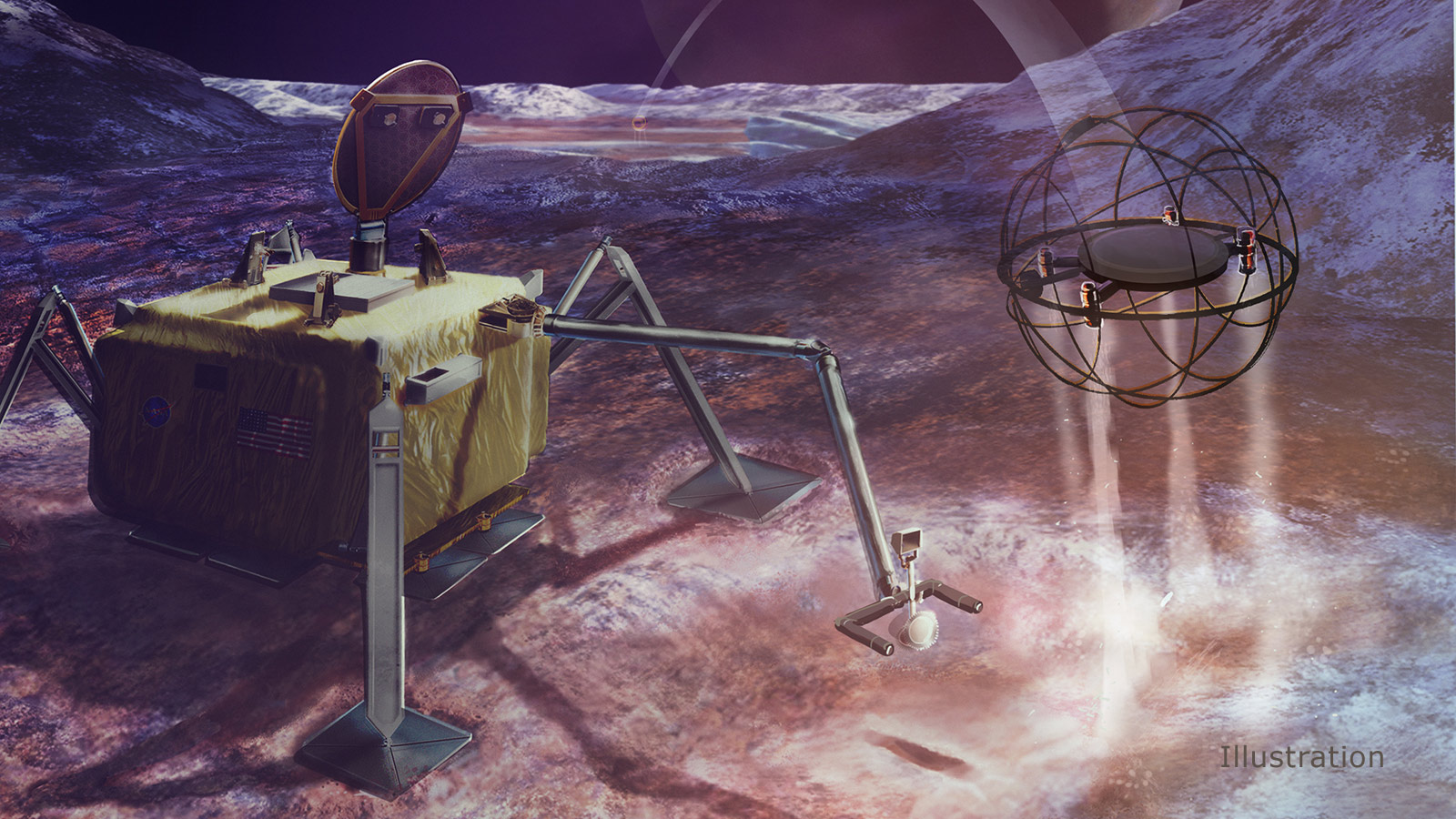Steampunk space exploration? Icy moon robot could hop around on steam power.
Icy moon explorers may someday hunt for life using an old-fashioned method: steam power.
A conceptual robot being investigated at NASA's Jet Propulsion Laboratory (JPL) would release soccer ball-sized machines to hop on the surface and fly through the air, using steam produced by melting ice.
The early-stage idea is called Steam-Propelled Autonomous Retrieval Robot for Ocean Worlds (SPARROW). On an icy moon such as Jupiter's Europa or Saturn's Enceladus, SPARROW could potentially travel several miles in the moon's low-gravity environment — with no thick atmosphere to slow it down.
Related: Chaos reigns in detailed new views of Jupiter's icy moon Europa
"The terrain on Europa is likely highly complex," Gareth Meirion-Griffith, JPL roboticist and lead researcher of the concept, said in a JPL statement. Examples of the challenges a robot like SPARROW may encounter include crevasses, porous and treacherous ice, or penitentes, long blades of ice that typically form at high latitudes on Earth. SPARROW, however, could navigate these obstacles, Meirion-Griffith added. "It has complete freedom to travel across an otherwise inhospitable terrain."

SPARROW received Phase I funding from the NASA Innovative Advanced Concepts program, which specializes in technology that would push the bounds of traditional design, in 2018, allowing the design team to explore ideas and advance the technology readiness level of the mission for spaceflight. SPARROW's team could propose a follow-on Phase II study for further development, too.
So far, the team has been evaluating different ideas for water-based propellant systems that produce steam efficiently. Using computer simulations, SPARROW investigators also examined how the robot will tumble and move while exploring the ice. Their concern is making sure that the robot uses the most efficient launch angles and hop speeds to move around.
Get the Space.com Newsletter
Breaking space news, the latest updates on rocket launches, skywatching events and more!
"From this, and related propulsion calculations, we were able to determine that a single long hop would be more efficient that several smaller hops," Meirion-Griffith said.
While a potential SPARROW mission is years or perhaps decades from launch (if it happens at all), the researchers already have some ideas about how the exploration would proceed. A lander would potentially bring down swarms of SPARROWs to do independent investigations on a moon's surface. The lander would delve into the ice and melt the ice to fuel the individual SPARROWs.
Each little hopping robot would then heat the water inside its engines to make the steam it needs to jump off the surface. The SPARROWs would range a safe distance from the lander, allowing them to return to home base whenever they need a refuel — and also, to drop off scientific samples for analysis.
Follow Elizabeth Howell on Twitter @howellspace. Follow us on Twitter @Spacedotcom and on Facebook.
Join our Space Forums to keep talking space on the latest missions, night sky and more! And if you have a news tip, correction or comment, let us know at: community@space.com.

Elizabeth Howell (she/her), Ph.D., was a staff writer in the spaceflight channel between 2022 and 2024 specializing in Canadian space news. She was contributing writer for Space.com for 10 years from 2012 to 2024. Elizabeth's reporting includes multiple exclusives with the White House, leading world coverage about a lost-and-found space tomato on the International Space Station, witnessing five human spaceflight launches on two continents, flying parabolic, working inside a spacesuit, and participating in a simulated Mars mission. Her latest book, "Why Am I Taller?" (ECW Press, 2022) is co-written with astronaut Dave Williams.









